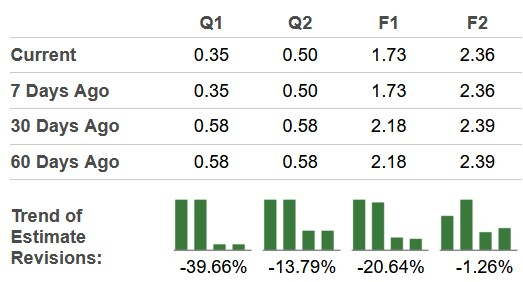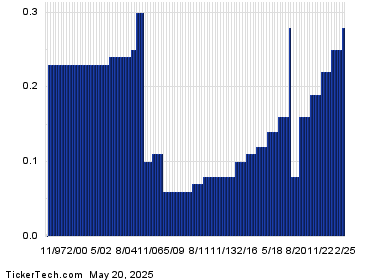“`html
Four Reasons to Consider Investing in Amazon Right Now
Amazon (NASDAQ: AMZN) has become one of the largest companies globally, boasting a market cap exceeding $2 trillion. Although the stock has rebounded from its lows, shares are still down for the year, presenting a potential buying opportunity.
Here are four reasons to consider investing in Amazon stock now.
1. Cloud Computing Leadership
Amazon is primarily known for its e-commerce operations. However, its most profitable sector is actually Amazon Web Services (AWS), which pioneered the cloud computing and infrastructure-as-a-service industry. It currently holds around a 30% market share, making it the largest cloud service provider in the world.
Recently, AWS demonstrated impressive growth, with revenue increasing by 17% last quarter to $29.3 billion and operating income up 22% to $11.5 billion. Demand for AWS services is being driven by customers developing artificial intelligence (AI) models and applications using tools like Bedrock and SageMaker. These services allow clients to build and deploy AI workloads on AWS, contributing to ongoing revenue growth.
Amazon has also developed proprietary AI chips through its Annapurna Labs subsidiary. The Trainium chip is optimized for large language model training, while the Inferentia chip excels in inference tasks. These custom chips offer enhanced performance with reduced power consumption, giving Amazon a competitive cost advantage.
Despite uncertainties surrounding overbuilding in its data center infrastructure, AWS continues to experience robust demand from major cloud providers.
2. Easing Tariff Concerns
AWS has fueled Amazon’s growth, but e-commerce remains a significant revenue source. The North American segment saw 8% revenue growth in Q1, but Amazon faces challenges from tariffs and trade dynamics.
As a general merchandise retailer, Amazon is sensitive to economic conditions. Increased tariffs could weaken consumer spending and raise product prices, directly impacting e-commerce sales. Although Amazon could absorb some tariff costs, it would adversely affect gross margins.
Recent news about the U.S. reducing tariffs on Chinese imports from 145% to 30% over 90 days is positive for Amazon. The adjustments may reduce competitive pressures, especially against Chinese sellers like Temu and Shein.
However, the risk remains that trade tensions could resurface, posing future challenges.

Image source: Getty Images.
3. Margin Improvements
Apart from trade dynamics, Amazon has been improving its margins and profitability, largely due to AI integration.
The company utilizes AI-powered robots in fulfillment centers, enhancing efficiency in tasks like lifting, sorting, and damage detection. This technology minimizes errors while reducing costs. AI also aids in optimizing logistics routing, allowing faster deliveries and lowered fuel expenses.
Furthermore, Amazon’s high-margin sponsored ad business benefits from AI by improving campaign targeting and execution. A notable development includes a generative AI tool that helps advertisers create compelling images for their campaigns.
Overall, these advancements lead to strong operating leverage. In Q1, North America’s operating income rose 16% despite only an 8% increase in revenue.
4. Favorable Valuation
Despite recent stock gains, Amazon trades at one of its lowest valuations historically. While some may interpret this as a signal of slower future returns, the company’s growth prospects remain robust, as outlined earlier.
Overall, Amazon appears to be a solid long-term investment. Concerns related to tariffs are largely cyclical and unlikely to hinder its ongoing success.
Investment Opportunity
This could be a prime time to consider investing in Amazon.
John Mackey, former CEO of Whole Foods Market and an Amazon subsidiary, is a member of The Motley Fool’s board of directors. Geoffrey Seiler has no position in any stocks mentioned. The Motley Fool holds positions in and recommends Amazon.
The views and opinions expressed herein are those of the author and do not necessarily reflect those of Nasdaq, Inc.
“`






